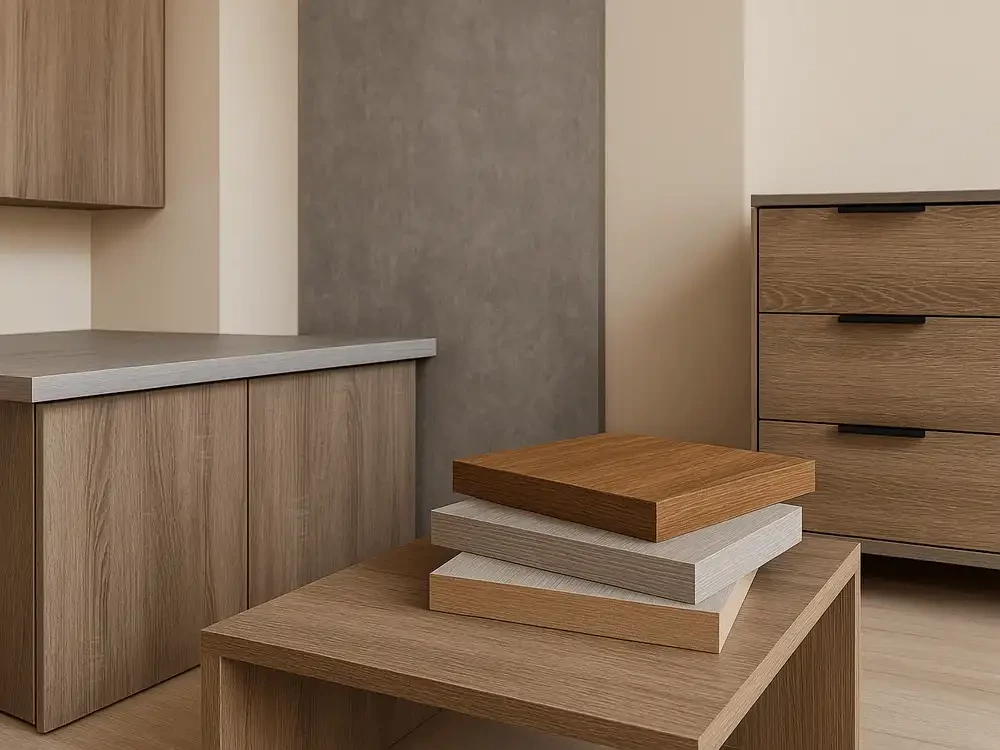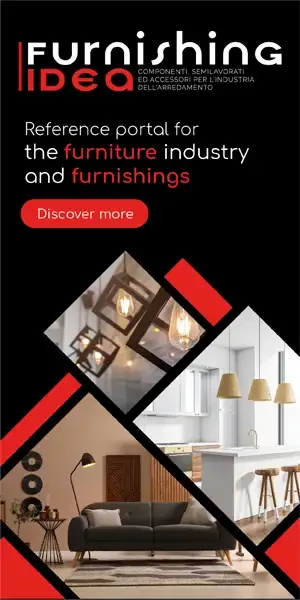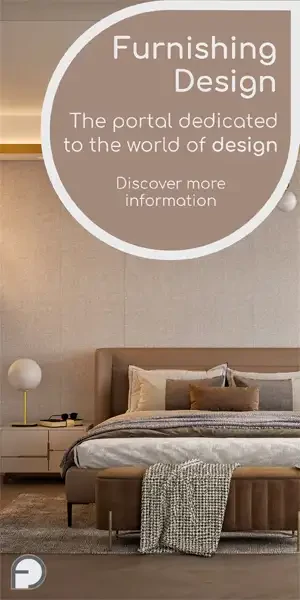
The melamine panel is obtained by covering a particleboard or MDF substrate with decorative paper impregnated with melamine resins. The result is a compact surface, resistant to wear and with high aesthetic impact.
In recent years, technological evolution has significantly improved the quality of melamine surfaces, which now faithfully reproduce wood grain, the materiality of concrete or the elegance of natural stone, making them perfect for domestic and professional environments.
Melamine for the kitchen: everyday aesthetics and durability
In the kitchen, melamine is one of the most appreciated solutions for doors, sides and worktops.
Its resistance to scratches, moderate heat and moisture makes it ideal for everyday use, ensuring long-lasting performance and ease of cleaning.
Wood-effect or concrete-effect finishes are particularly in demand, as they combine aesthetic value and affordability compared to alternatives such as solid wood or HPL laminate.
Today manufacturers offer melamine surfaces that are antibacterial and have low formaldehyde emissions, also perfect for sustainable kitchen projects.
Melamine for the bathroom: functionality and style even in humid environments
Thanks to technological advances, melamine surfaces can also be used in humidity-prone environments such as the bathroom.
In combination with moisture-resistant substrates, melamine allows the creation of furniture, claddings and shelves that are resistant to water and temperature changes.
Matte and soft-touch textures, increasingly widespread, provide an elegant and contemporary look, while the wide color range allows the bathroom to be harmonized with the rest of the decor.
Melamine in contract furnishing: performance and customization
In the contract sector, melamine is a strategic solution for hotels, offices, shops and public spaces.
The resistance to wear, ease of maintenance and low costs make it possible to design custom furnishings even for large-scale supplies.
Thanks to modern printing and surface engraving techniques, it is possible to obtain very realistic tactile and visual effects, ideal for creating welcoming, professional spaces that are consistent with a brand’s identity.
Furthermore, the possibility of producing fire-retardant or water-repellent panels further expands the material’s potential in the professional sector.
Custom furniture and contemporary design
Melamine surfaces are also perfectly suited to the creation of custom furniture, thanks to their ease of cutting and machining.
Designers and craftsmen choose this material for its compositional flexibility, which allows the creation of wardrobes, bookcases, boiserie or fitted walls with coordinated finishes and refined details.
New design trends show a growing use of melamine with a textured effect, combined with metal or glass elements, for a sophisticated and contemporary result.

From kitchens to bathrooms, and from residential spaces to contract environments, the melamine surfaces confirm themselves as a smart choice for those seeking beauty, functionality and sustainability.
Thanks to increasingly advanced and high-performing finishes, they now represent a meeting point between accessible design and technical quality, ideal for new-generation furnishing projects.

 en
en  Italian
Italian

